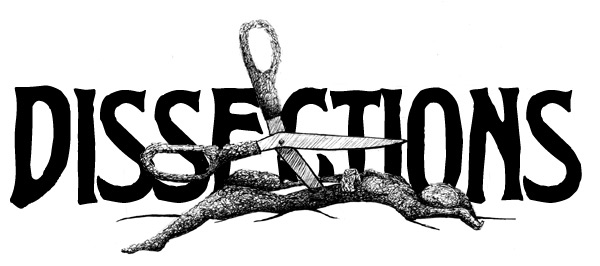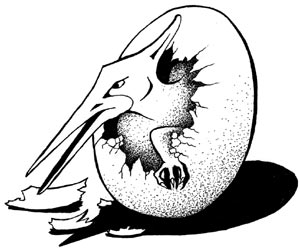[an error occurred while processing this directive]



On Teaching Horror
Michael A. Arnzen, Frances Auld, Rhonda
Brock-Servais and Doug Ford, interviewed by Gina Wisker
(International Conference on the Fantastic in the Arts (ICFA), Orlando,
Florida, USA, 2008)
Mike: Why teach horror? You want me to answer the first question? Well, I dunno. The reason you want to teach it I suppose is the same reason that people want to read it…and that is to find the answers to the meaning of life and death. But the world needs ushers into that great unknown, and that’s what we are. And the ushers into the darkness, we’re kind of the gentle hand that takes people into the funeral pile or whatever
But, you know, I suppose all of us who are in education are drawn to it because it’s our passion you know. I teach it because I love to read it, I love to write it, I’m drawn to this dark side, so it gives me a way of expressing this interest in a safe way. (Laughing) How’s that for a bad answer?
Rhonda: Well I’m going to paint a somewhat unflattering portrait of my home institution.
Gina: On tape?
Rhonda: On tape, yeah. Actually, I have notes. We have a course called Genre Studies, and the first time I proposed a horror course for the Genre Studies course I expected it would be treated like every other Genre Studies course. The curriculum committee will look at and go ‘Oh, OK’, which is what they did with mythology and detective fiction and everything else. Instead, I got asked for a syllabus, and once I handed that in I got asked to come in for a meeting with the curriculum committee. I was completely and wholly unprepared for this response but did not understand why this was an issue, and I went in using a sort of a scattered shot approach but you know horror works are caught in our curriculum elsewhere, they’re just not addressed as horror. Horror reflects the changing nature of society and we don’t do survey courses – we do period study courses, so it fits right there in with that. That horror is really good for applying a variety of different critical theories to.
Well, eventually after much negotiating I got to teach my class. I had to rename it literary horror and I had to agree to do absolutely no film. (Laughing) I had to outline very clear goals. I had to have very clear goals, very clear objectives for my class, and we asked a lot of questions which have to do a lot, very similar to the questions Gina just put forward. Not the least of which is how do you deal with a disturbed student. There seem to be two approaches to the study of the disturbed student: a student who is disturbed by the content or a student who was just a disturbed student therefore drawn to the content. (Laughing)
So, how I ended up sort of legitimating myself was not ‘I have a passion, this is the way to explore the dark side of life.’ I ended up pulling bits and pieces from every sort of legitimate, kinetical thing I could think of but also presenting it as just one more way to do what we do in all of our literature classes, which is to present just another way to look at and examine life and literature and develop a new way of thinking about things. That’s my intro bit.
Mike: Can I borrow your notes? (Laughing) Well, speaking of disturbed students, I guess part of my philosophy is it can’t be a horror course unless you are disturbing the students so there’s kind of…maybe a problem, an inherent problem in teaching it, in that this has to be confronted in that regard, as the concerns that came out in our earlier paper session [Doug Ford's paper on Ketchum's The Girl Next Door]. I haven’t faced the kind of institutional questioning, which surprises me I think, because they’re not clear exactly what I’m doing in that class. But I think horror has an inherent value for the academy, for a teaching institution, because it provides a variety of intersections amongst which are popular culture and academic concerns – theoretical. Students have some basis of being familiar with this and you can de-familiarise them and disturb them on some level and provoke thought, which I think the paper brought out really well earlier. Also, you know the intersections between the personal and the social, which all lends to wonderful teaching moments.
Frances: As far as why I teach it, I can reiterate what everyone has said here but I will add it really does work, and I spoke of this before. Because horror is visceral, I do believe that it can, you know, crack through that apathy that many students have. Our culture is so saturated in horror at this time that it’s really very handy to be able to talk to students about something they’re already partially familiar with and in that way let them make application towards new cognitions, critical theory, with things they’re already somewhat familiar with. So, those are really two of the ways in which I try to use it. My other issue is: having gone through fairly recently the reverse of assessment and evaluation, or still in the teeth of that if you will, I was just so excited to be able to take quizzes and papers and creative pieces that my students had done and to be able to hold them up and say we are cracking it on creativity but also on critical thinking, on higher order analytical skills. I can show you right here why picking that dead body apart on screen is exactly what you told me you wanted me to give the students to do in terms of, you know, taxonomy or various other modes of recognition that students are learning, and they’re capable of demonstrating that they’re learning and they’re learning at the higher levels that we want them to as opposed to just yakking out a short answer. So, I think that horror is effective and I’m particularly delighted at all the people I know that use it so creatively to get students to think and write…to increase students’ development in terms of writing and reading all kinds of texts. I see professors who, essentially, are using horror effectively to teach, whatever they’re teaching. That’s it.
Doug: If I could just add to that, the two students I’ve brought with me have presented papers they wrote for my horror and literature course, and they’re incredibly talented, and I could use their papers as evidence of how, you know, thought provoking such a course can be and what it can lead to, the kind of academic growth that these two here have experienced.
Concluding note: This conversation illustrates the popularity of
teaching horror, and its use as a vehicle for focus on important issues,
as well as what we might call threshold concepts on the discipline
– those of representation, ideological and values engagement,
and of context. We also have here examples of ways in which academic
colleagues resist curriculum and course leader scepticism, any institutional
reduction of horror to mere dubious entertainment. Instead it is recognised
as a branch of fantasy, and of the Gothic. These colleagues talk of
their enthusiasm for the learning, cultural and personal development
of their students and of academic work with horror in their teaching,
which can engage students with social and cultural issues, and with
developing close reading, conceptual, critical and creative work.
(Gina)